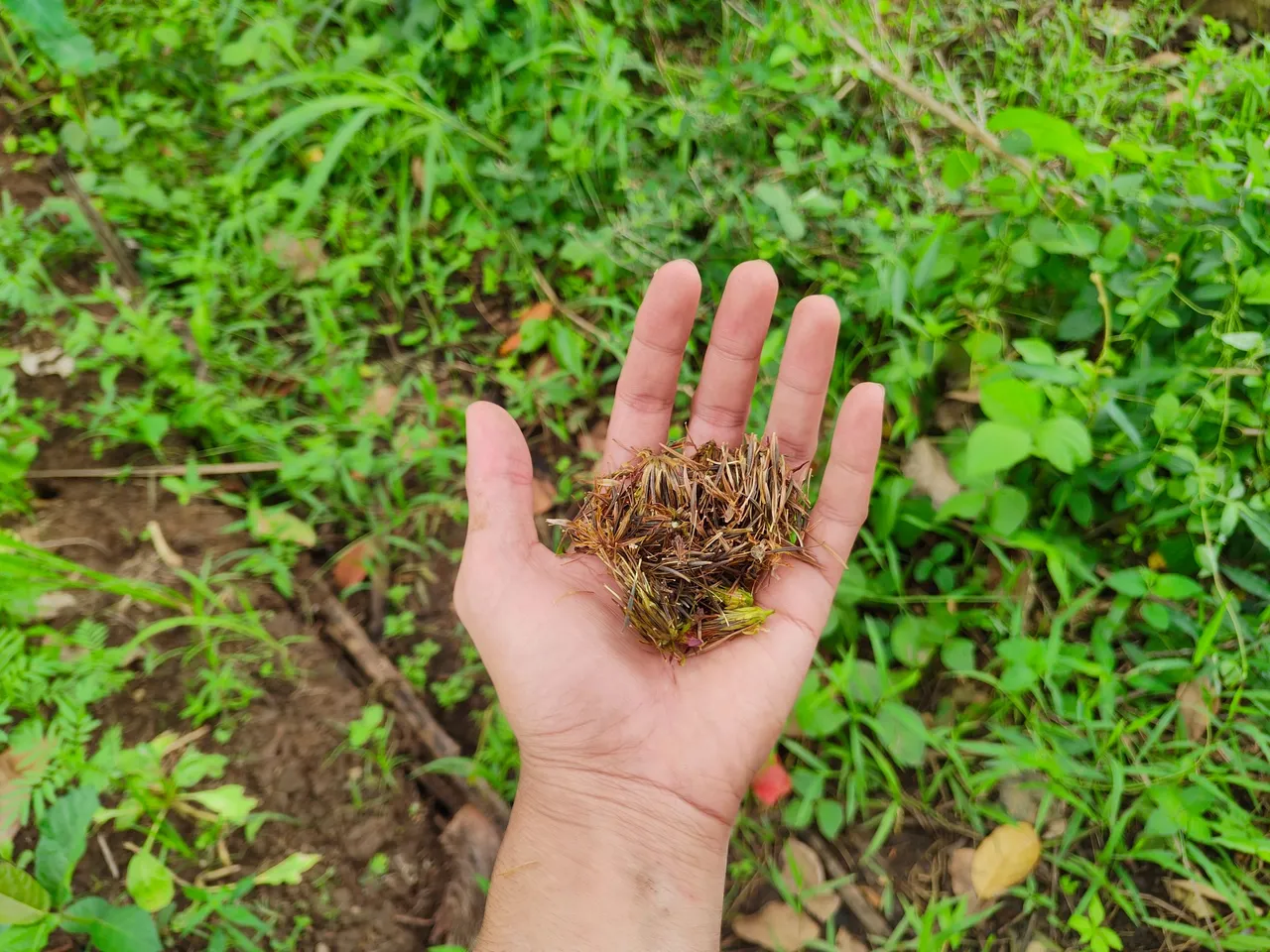
The art of healing comes from nature, not from the physician. Therefore the physician must start from nature, with an open mind. — Paracelsus
It's been a wonderful week this time!
Although the daily forecast is torn between isolated thunderstorms and cloudy with stray rain, it is mostly sunny at day and rainy at night.
The new change in weather is the perceptible wind, increasing from 5 km per hour in the previous months to 15 this month. This means that the sunny day will be more refreshing and breezy at times.
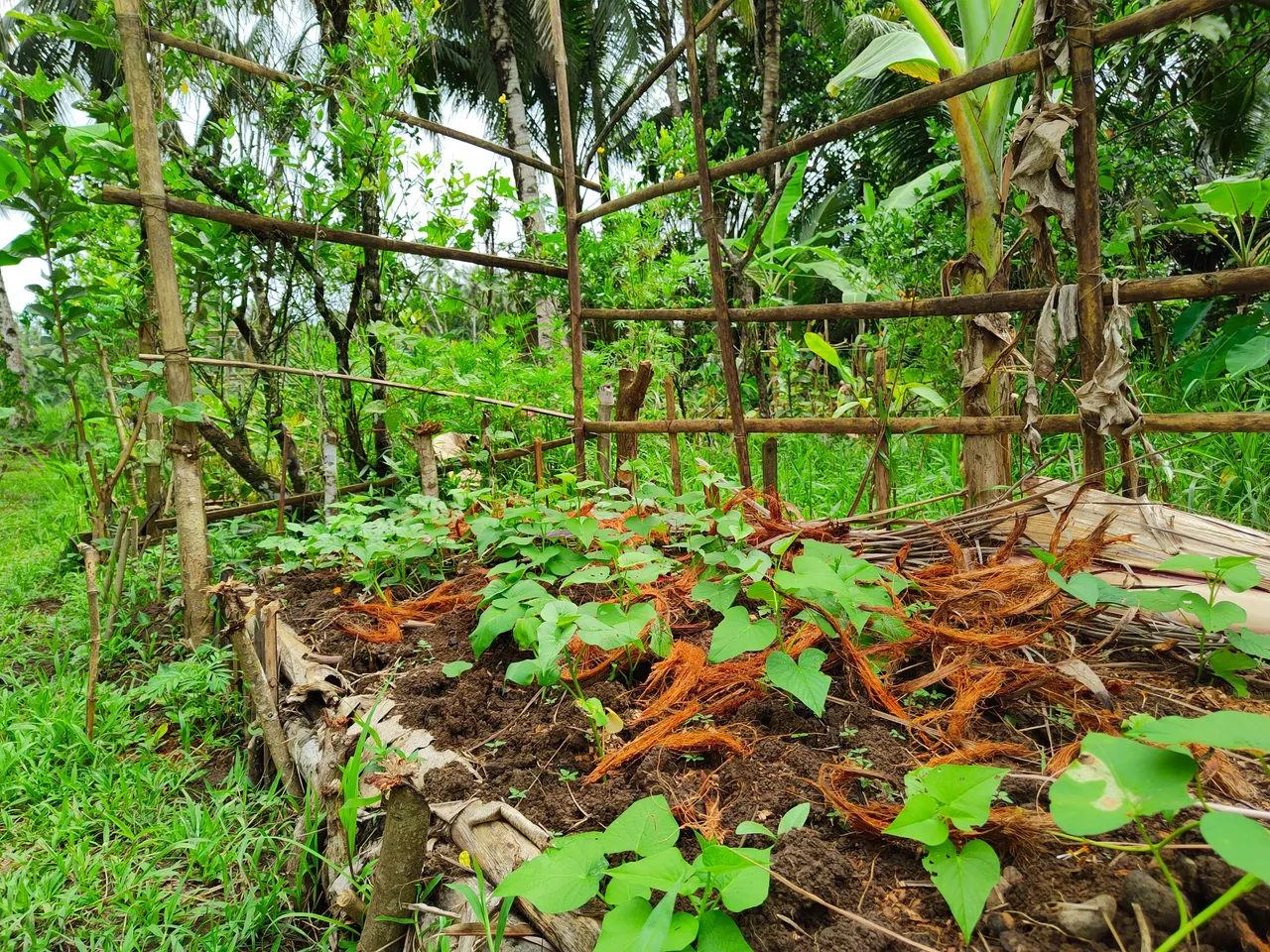
Growing More Companion Crops
Recently, almost all of my Marigolds and Cosmos have died off already together with the other crops of the previous season. The ones I planted in the previous weeks are still young, others have just sprouted.
Marigolds and living mulch really do wonders in the garden by either deterring pests or giving them more choices to lessen the damages. The problem now is pests attacking the young guavas, cucumbers, chayote, and other crops.
That's how it goes, nothing much that I can do to help other than catching and squashing as many bugs and caterpillars as possible.
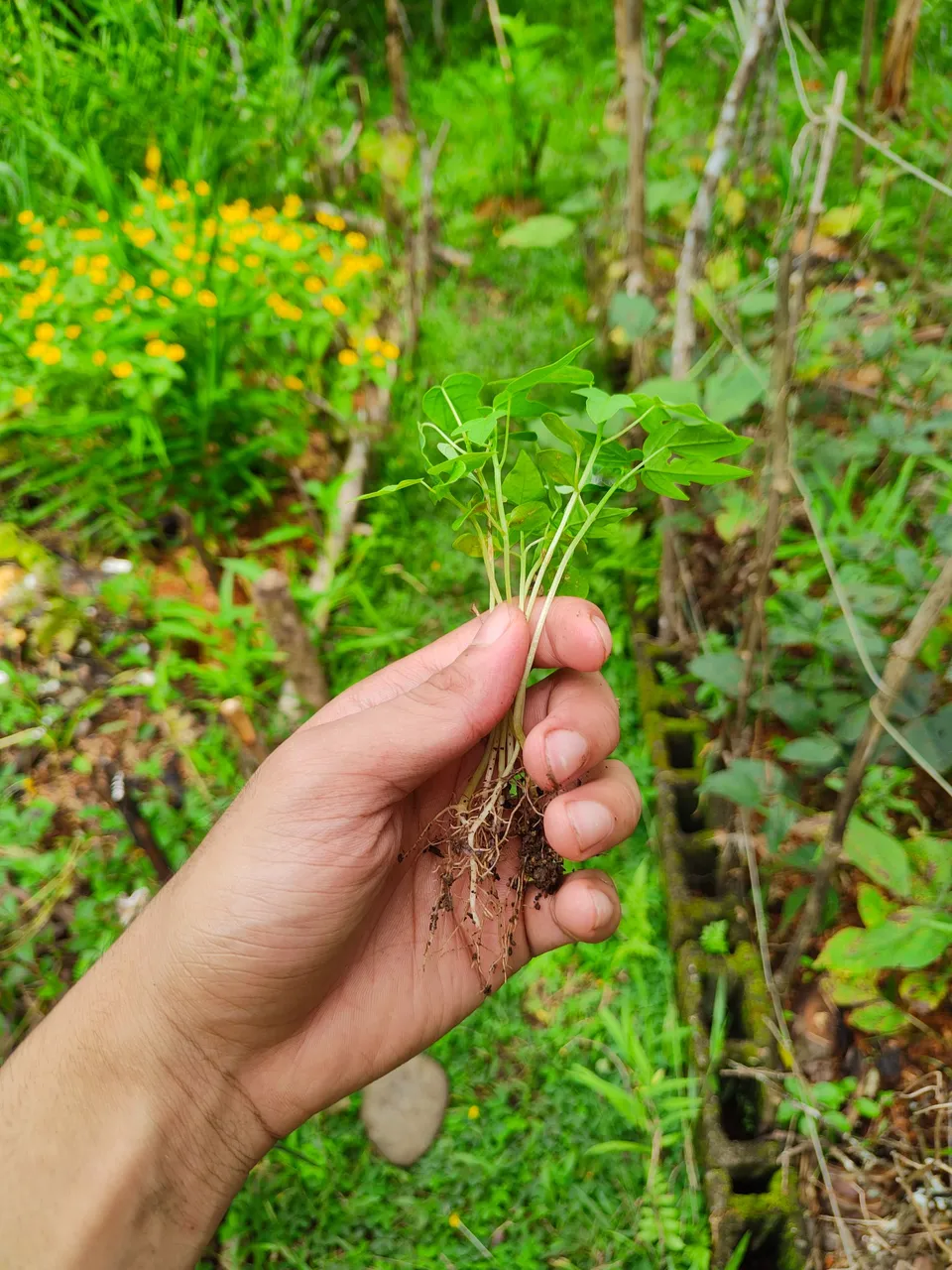
Recently, I planted more native Papayas and added coco husks to the raised beds. I also planted more Pinto Peanuts on the pathway where I planted the bananas.
Resource-Hungry Rice Hybrids
In the recent months, the rice farmers who received demo rice seeds from the Department of Agriculture has been complaining with the extent of pest damage and higher resource dependence.
The 'Dinorado' hybrid rice has started showing signs of susceptibility to certain pests locally called 'Lupot-lupot' where the leaves whiten and curl down. On a large scale, webs become visible aside from the desaturated leaves of the rice.
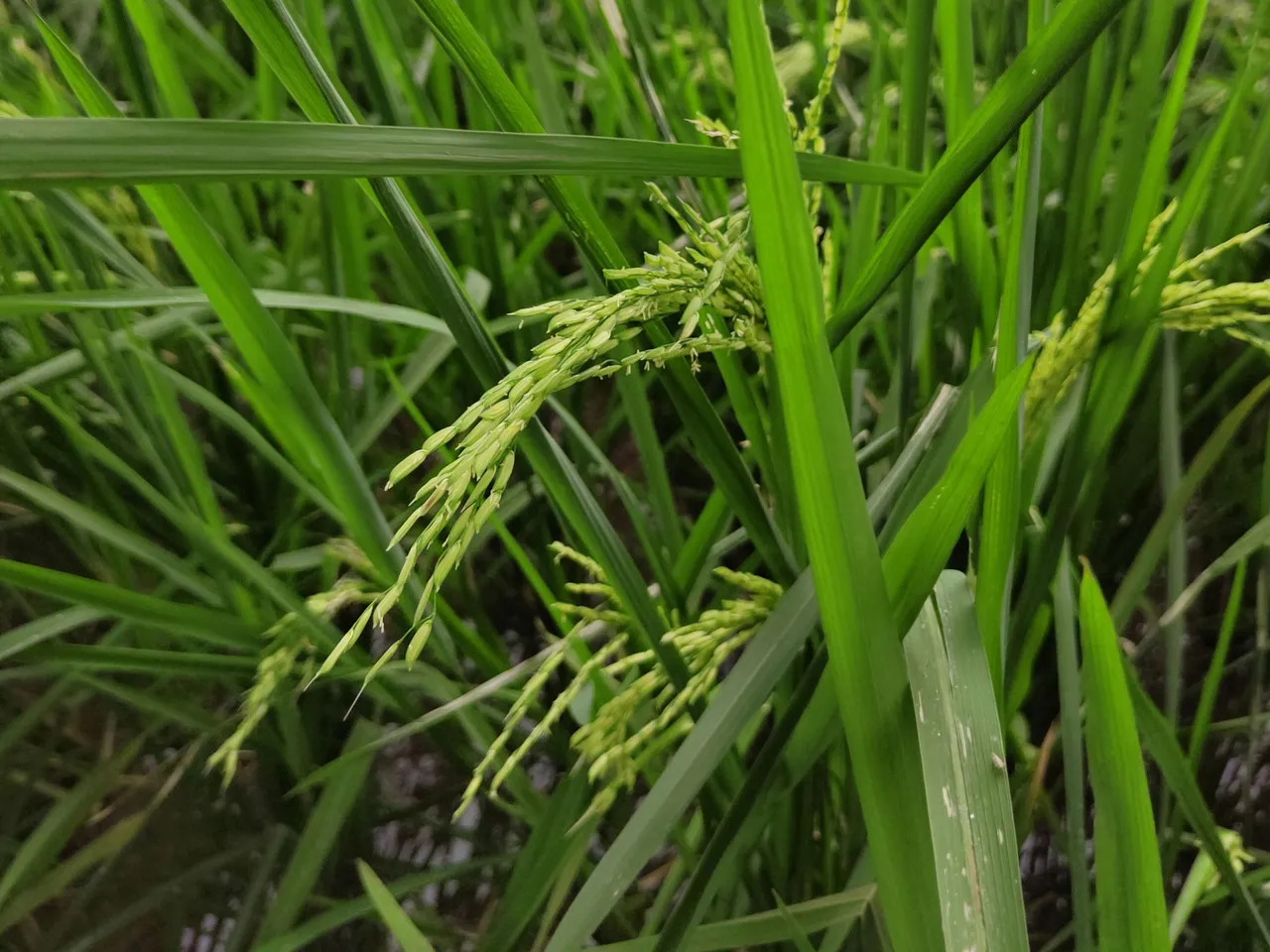
The astringent scent of pesticide sometimes reaches our property, which is giving me an allergy-like effect afterwards. This is the very reason why we can't certify as an organic farm because we're surrounded by rice fields.
Farmers began some rumors about the technicians giving only short visits without enough support to farmers. Those with financial capacity were spraying pesticides several times a week but with little effect, others just gave up already.
Almost all of the rice planted last July has entered the flowering stage and will be ready for harvest by the end of October. In November, I'll be collecting rice stalks for mulching, but I am doubting the use of it because of the pesticide residues it contains.

Using Wood Chips as Mulch
At home, we've been using an induction cooker as soon as the price of a propane tank has somewhat equaled the cost of using electricity. Then we started using firewood again since the electricity cost has continually skyrocketed in the past months.
Firewood is abundant since we can just gather from the orchards and in the farm, sometimes it needs to be sundried to lessen the smoke when used.
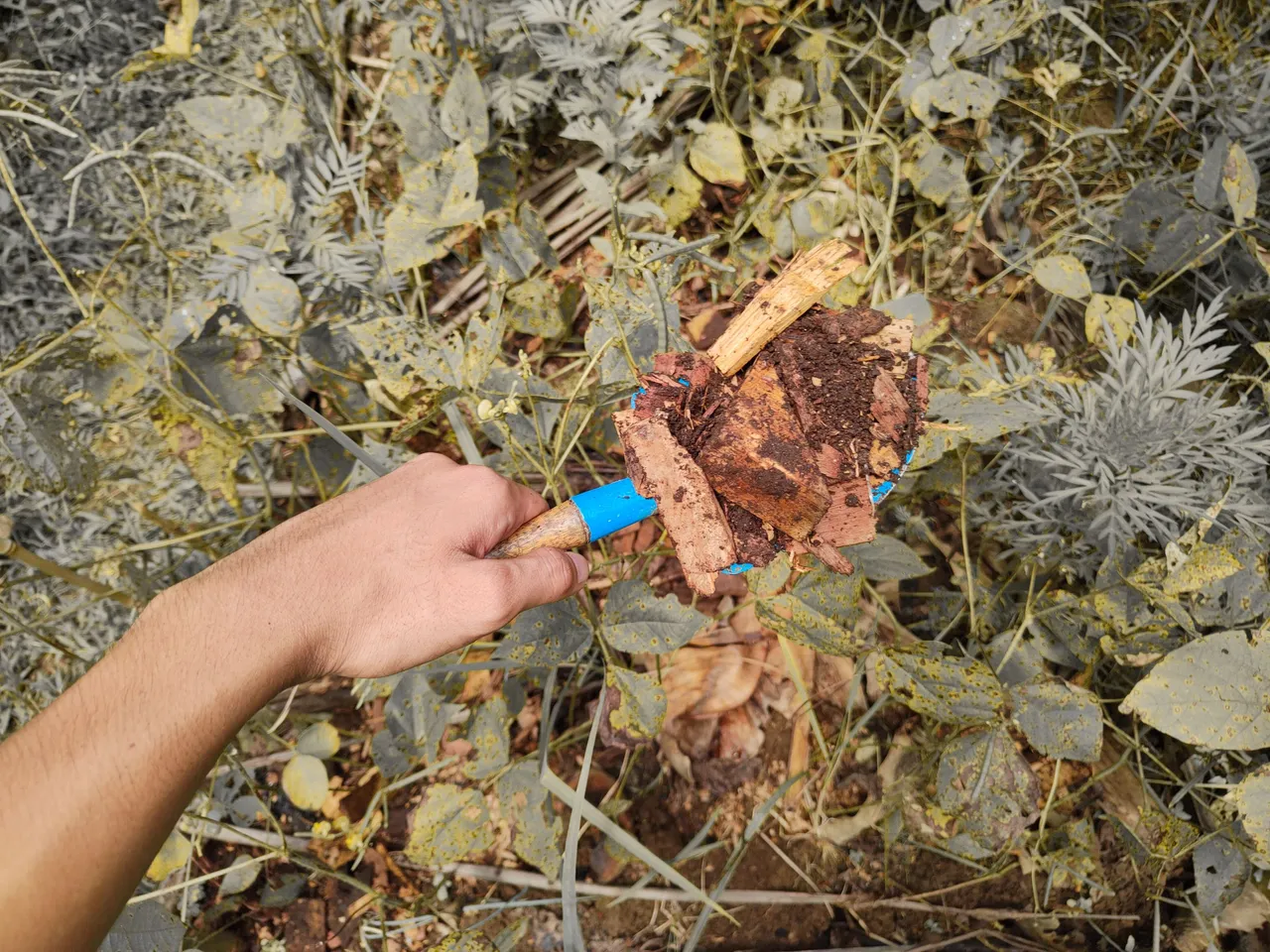
As soon the 'abuhan' or fireplace becomes full with ash and charcoal, I then collect it to be used on the raised beds. It is my best option for biochar since I can't afford spending on additional farm inputs.
The ash will adjust the soil pH while also adding potassium back to the soil and the charcoal bits will act as biochar to house beneficial microorganisms then capture moisture and nutrients as long-term storage for the crops.
I also found the last stash of chunkier wood chips left from the making of our furniture at home. Most are still intact while some had started to decay.
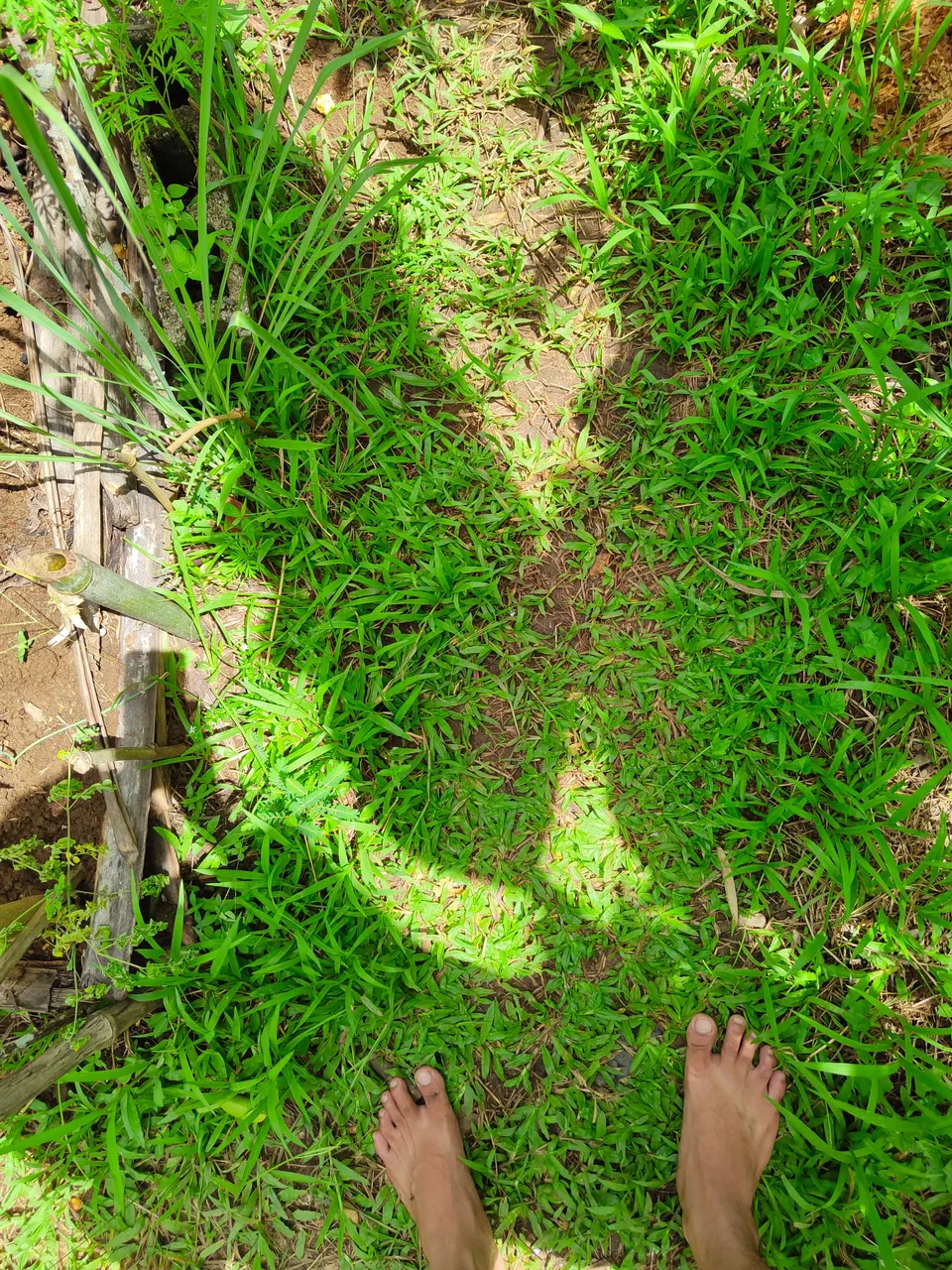 |  |
|---|
The heat was so unbearable today, I had to rest under the bananas in between the gardening chores. I was scattering the wood chips on all the raised beds so the beneficial fungi can use them as food to convert into ogranic matter which then is turned by worms into more accessible nutrients for the crops.
It will still take time, the gradual release of nutrients is a sustainable and long-term source of plant food for the years to come.
Food Supplements for Crops
While I am no enemy of 'chemical' fertilizer sold in the market, what I am against is the illicit usage to make hybrid crops overproduce and therefore making farmers dependent on more farm inputs to secure high yields—including the extreme use of herbicides, pesticides, and other non-sustainable methods.
Since we are abundant is rice, squash, and bananas, it would be a great idea to use those as cheap alernative to expensive fertilizers.
I have learned from YouTube about using Fermented Fruit Juice (FFJ) and Lactic Acid Bacteria Serum (LABS) to augment soil deficiency especially on young permaculture gardens.

Using LABS can help soften compacted soil, but additional organic material is need beforehand. FFJ can provide readily accessible nutrients to crops while also giving the microbiome food for them to become more active in converting organic materials into humus.
The two should be diluted in water prior to application on plants. It will help in plant growth and in making healthier and plump fruits.
In general, healing the soil is not an instant process especially without budget, but there are cheap, sustainable, and long-term options to help fix and cure eroded and/or compacted soil.
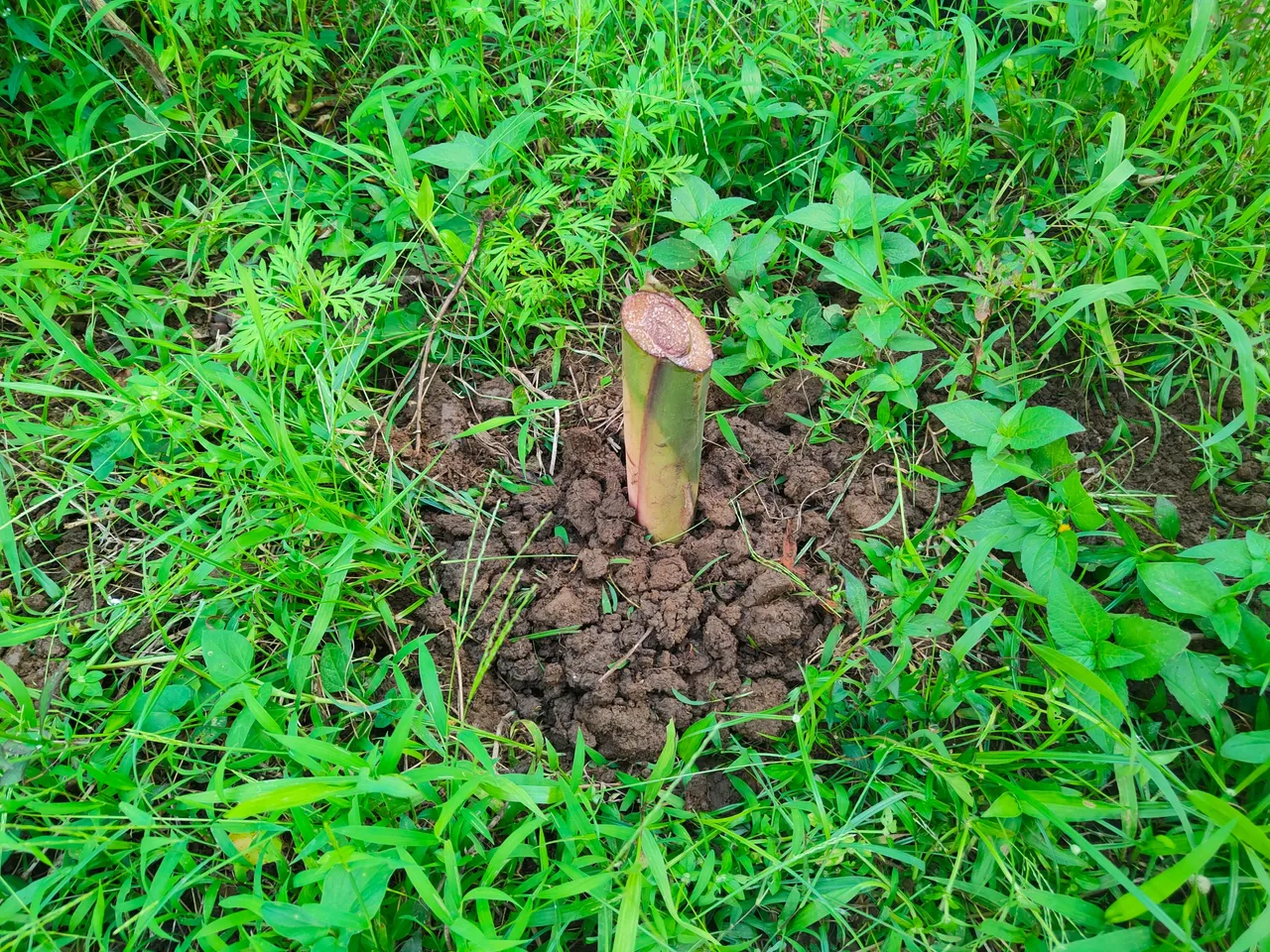
How about you, what cheap and alternative gardening methods are you using? Share in the comments down below! :)
PINNED POSTS
 | Clearing the Damage After the Storm Instead of falling into anxiety, I took time to make use of what the storm had given. |
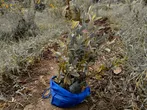 | Building Abundance with More Fruit Trees Amid the Economic Turmoil This year, I planned to initially plant 100 trees wherever possible until the year ends. |
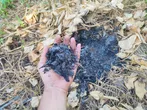 | Using Saltwater and Fire to Heal a Permaculture Garden Plant debris becomes natural mulch and organic matter. |
 | Harvesting Cucumbers After a Year of Labor As crops mature, harvest season began as well. |
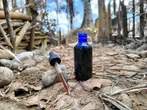 | Fermenting Fish Amino Acid for the Garden Crops It would be a sin to throw away such things, even the food scraps I turn it to compost now. |
 |  |  |  |  |  |  |
|---|

About Me
@oniemaniego is a software developer, but outside work, he experiments in the kitchen, writes poetry and fiction, paints his heart out, or toils under the hot sun.
 | Onie Maniego / Loy Bukid was born in rural Leyte. He often visits his family orchards during the summers and weekends, which greatly influenced his works. |

Donate with Crypto
Bitcoin 34hdQNHHFUodqegi2wwNeNw2p35ewvnaXQ
Ethereum 0xd36126ab2463c3404cca1c97d8f3337917dfd113
Not yet on Hive? Earn while blogging.
Sign up with PeakD | Ecency
